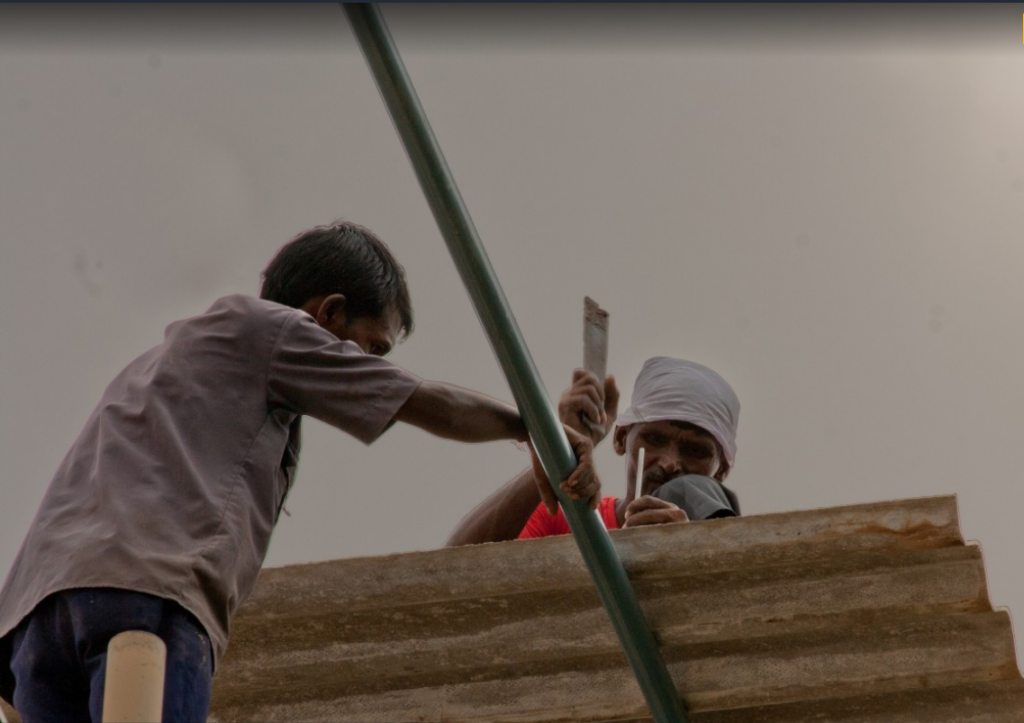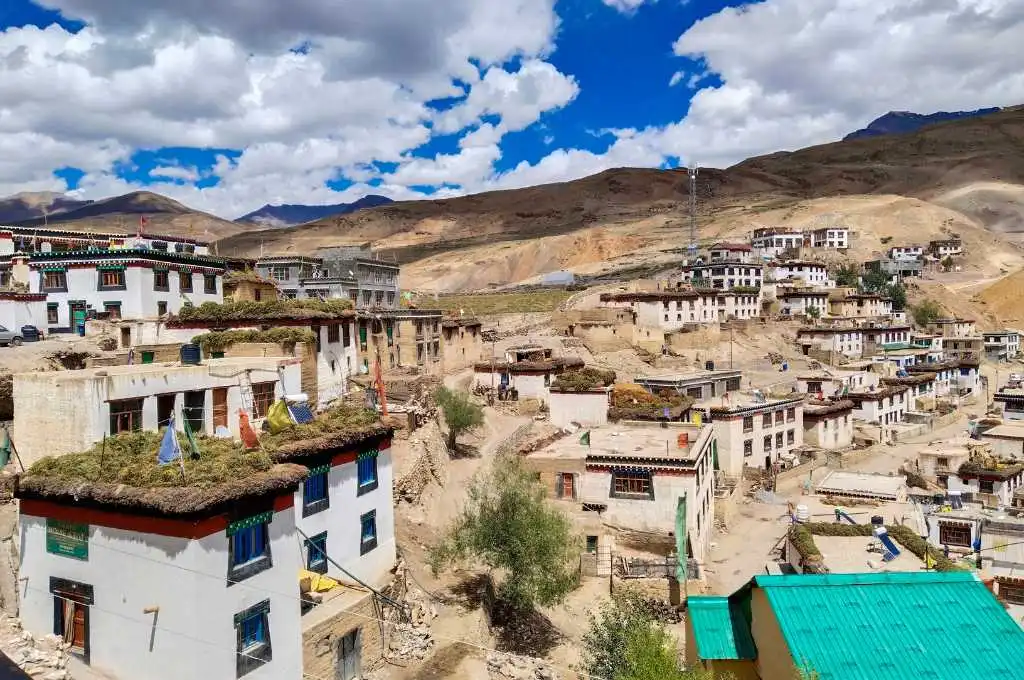As the spread of Covid-19 and the ensuing nation-wide lockdown brought economic activities to a halt earlier this year, India saw the lives of millions of migrant workers unravel. Job losses, mounting debts and the lack of secure living arrangements led to reverse migration of this hitherto invisible workforce from cities to their home states.
Indeed, migrants face a unique inability to access government-led social schemes (like subsidised housing) in their cities of work as their identity and domicile documents are often tagged to their native addresses. They may avail such benefits there but rely entirely on renting affordable homes in the cities, obtained through informal markets, often in sub-standard living conditions.
Informal rental markets
The Central government has historically promoted ownership models in affordable housing for the poor. Recently, spurred on by the pandemic, it introduced the Affordable Rental Housing Complexes as a sub-scheme under the Pradhan Mantri Awas Yojana-Urban.
This cabinet-approved scheme is targeted at “migrant workers/urban poor” who live in slums, informal or unauthorised colonies, or peri-urban areas to avail formal, affordable, rental housing. Affordable Rental Housing Complexes aims to initially utilise existing government-funded vacant housing through public-private partnerships and subsequently incentivise the construction of such complexes on private lands.
While this is a welcome move, informal rental markets have been thriving for generations for a reason, and this new scheme’s success will hinge on its ability to provide a viable alternative.
A round of preliminary interviews with short- and long-term migrants working in the informal sector in Delhi-NCR showed that workers preferred living in basic set-ups that saved costs while being close to their community networks as well as workplaces. The workers interviewed included maids, cooks, car cleaners, childcare help, watchmen, drivers and sanitation workers, among others. It was noted that most of them came from areas of high-density and low infrastructures such as Dallupura, New Ashok Nagar and Khichripur (Delhi), Chakkarpur (Gurgaon) and Madhopura (Ghaziabad).
The interviews aimed to understand first-hand, what the motivations and constraints of living in informal rental housing were and how they perceived the formal government-led provision. Questions also covered how they found employment and housing in the city, the nature of their rental arrangements and the related costs.
Their responses revealed the following trends:
1. Community networks tap jobs
While there have been attempts to create employment bureaus, jobs in the informal sector are predominantly filled by word-of-mouth, conveyed through extended families, friends and community networks.
Potential workers would then travel from their rural homes, and bunk up with their urban contacts until they could start renting on their own. Several workers, especially from states like Bihar, Uttar Pradesh, Orissa and West Bengal, also indicated that jobs in Delhi-NCR paid significantly higher wages as compared to cities near their homes.
2. Monthly rentals between Rs 2,500-Rs 7,000
The interviews revealed that tin-roofed single rooms without an individual toilet typically costs about Rs 2,500, while concrete-roofed single rooms with attached toilet about Rs 7,000 per month. These units are often shared by single workers or taken up by families based on their spending capacities. Higher rentals demand security deposits while cheaper rooms do not thereby being preferred by most newly migrating workers. Non-payment of rents resulted in immediate eviction, with occasional instances of a few days’ leeways allowed by landlords.
3. Low documentation needs
As there is no formal documentation of transactions, verbal and trust-based agreements are often preferred due to lower literacy levels and resources. Document-verification appeared to be very low in the past and home retention depended on timely rent payment. However, the workers indicated that landlords had started demanding copies of Aadhaar Card or Voter’s ID lately.

4. Savings over the quality of living
Single migrants and even couples stated that they had families, pucca homes and land in their villages, and hence preferred maximising savings over comfort and living quality in the city. Some labourers had children living with extended families in villages and were willing to rent dilapidated structures in the city to keep cumulative living expenses to a minimum.
5. Renting near the workplace
Spending on transport to reach work significantly impacted the savings of migrant workers and hence they preferred to live in a 2 km to 5 km walking or cycling distance. Even if a member of an informal workers’ household had variable travel routine (for example, a painter or electrician who worked as per his day-to-day contracts), the rest of the family preferred to rent in the proximity of their primary jobs, which reduced commute cost and time and helped in accessing newer jobs.
Lessons from international markets
Most informal workers interviewed expressed their apprehensions over the government-led formal rental housing project. They wondered if the rents offered would be as low as their current housing, their proximity to workplaces, the duration, procedures and documentation involved in acquiring these formal rentals and the loss of linkages to existing community networks and eligibility conditions. It appeared that the dynamism of the informal markets is difficult to match in formal provision.
To break this deadlock, India must leverage learnings from international markets which have adopted various models to overcome the rental housing problem. Chile, Brazil and the US issue “rental vouchers” to low-income groups, which can be exchanged in lieu of rent in formal, private housing. This enables them to access a range of housing options, assures landlords of steady rental revenue and relieves the pressure on social housing agencies.
In Thailand, schemes like Baan Makong enable civil society organisations to skill communities to self-finance and self-construct formal, pucca, affordable homes and last-mile infrastructure (like water and electricity lines), while negotiating with government agencies for secure tenure and provision of trunk infrastructure. Chandigarh Housing Board’s Rent-to-Own housing scheme also shows how to enable aspiring socially mobile migrants, who could eventually prosper and consider owning a home in the city.
Other local solutions must be explored, such as mapping informal workers living near vacant government housing, so that they can be offered the choice of renting in those units before they are allotted through a centralised allocation process.
The proximity of the workers’ accommodations will benefit their employers as well. As profit margins would be too low for established formal agencies to part with well-located sites, in situ up-gradation of informal settlements facilitating current owners on negotiated terms is another avenue.
With efforts on to ensure that states adopt reforms like the National Urban Rental Housing Policy and the Model Tenancy Act, the government is best placed to facilitate the production of affordable rental housing at scale. Just like it has expanded its scope of affordable housing from ownership-based models to rental models, it must allow for a range of options to choose from and explore creative ways to become a viable alternative to the informal market.
Views expressed in this article are personal.
This article was originally published on Scroll.in.





